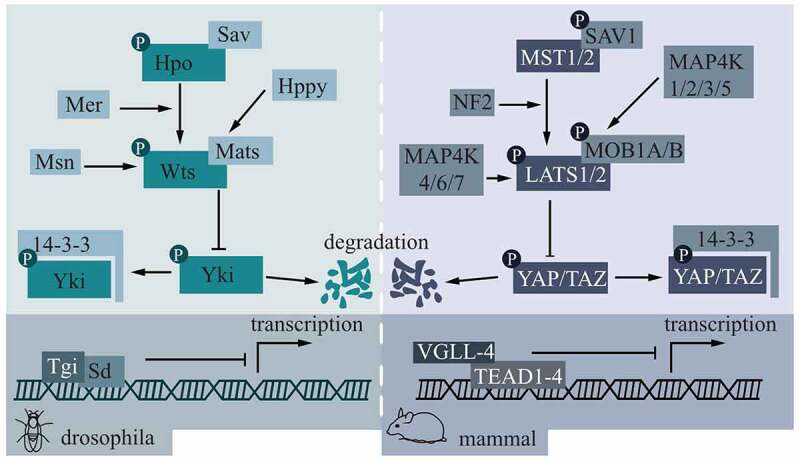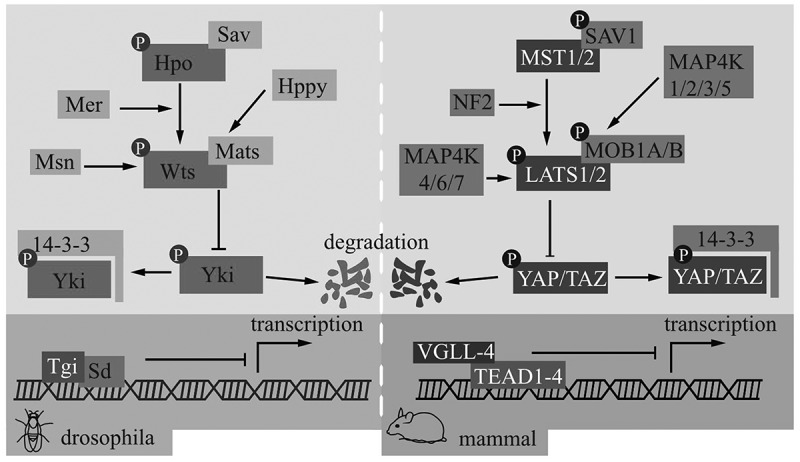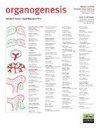重点研究口腔起源干细胞、牙釉质形成和牙周组织再生中的Hippo通路。
IF 2.8
4区 生物学
Q4 BIOCHEMISTRY & MOLECULAR BIOLOGY
引用次数: 1
摘要
Hippo通路是由MST1/2、LATS1/2、SAV1、MOB1A/B及下游的YAP/TAZ等核心分子组成的细胞调控通路。Hippo通路全面参与细胞增殖、分化、迁移和凋亡的调控,在口腔来源的干细胞(如DPSCs和PDLSCs)、牙釉质形成和牙周组织再生中起着关键作用。在此,我们总结了参与这些进展的Hippo通路,并总结了Hippo通路与BCL-2、ERK1/2、ROCK、TGF-β/BMP和Wnt/β-catenin通路的串串,以期为进一步的临床治疗提供依据。本文章由计算机程序翻译,如有差异,请以英文原文为准。



Focusing on Hippo Pathway in Stem Cells of Oral Origin, Enamel Formation and Periodontium Regeneration.
Hippo pathway is a cellular regulatory pathway composed of core molecules such as MST1/2, LATS1/2, SAV1, MOB1A/B and downstream YAP/TAZ. Fully involved in regulating cell proliferation, differentiation, migration and apoptosis, the Hippo pathway is critical in regulating stem cells of oral origin, for instance, DPSCs and PDLSCs, enamel formation and periodontium regeneration. Here, we summarized the Hippo pathway involved in these progresses and concluded crosstalks of the Hippo pathway with BCL-2, ERK1/2, ROCK, TGF-β/BMP and Wnt/β-catenin pathways, hoping to provide foundation for further clinical therapy.
求助全文
通过发布文献求助,成功后即可免费获取论文全文。
去求助
来源期刊

Organogenesis
BIOCHEMISTRY & MOLECULAR BIOLOGY-DEVELOPMENTAL BIOLOGY
CiteScore
4.10
自引率
4.30%
发文量
6
审稿时长
>12 weeks
期刊介绍:
Organogenesis is a peer-reviewed journal, available in print and online, that publishes significant advances on all aspects of organ development. The journal covers organogenesis in all multi-cellular organisms and also includes research into tissue engineering, artificial organs and organ substitutes.
The overriding criteria for publication in Organogenesis are originality, scientific merit and general interest. The audience of the journal consists primarily of researchers and advanced students of anatomy, developmental biology and tissue engineering.
The emphasis of the journal is on experimental papers (full-length and brief communications), but it will also publish reviews, hypotheses and commentaries. The Editors encourage the submission of addenda, which are essentially auto-commentaries on significant research recently published elsewhere with additional insights, new interpretations or speculations on a relevant topic. If you have interesting data or an original hypothesis about organ development or artificial organs, please send a pre-submission inquiry to the Editor-in-Chief. You will normally receive a reply within days. All manuscripts will be subjected to peer review, and accepted manuscripts will be posted to the electronic site of the journal immediately and will appear in print at the earliest opportunity thereafter.
 求助内容:
求助内容: 应助结果提醒方式:
应助结果提醒方式:


